This article was co-authored by Lois Wade. Lois Wade has 45 years of experience in crafts including sewing, crochet, needlepoint, cross-stitch, drawing, and paper crafts. She has been contributing to craft articles on wikiHow since 2007.
wikiHow marks an article as reader-approved once it receives enough positive feedback. In this case, 93% of readers who voted found the article helpful, earning it our reader-approved status.
This article has been viewed 274,384 times.
Ever wonder how Great-great-grandma dyed the cloth for the family clothing? Perhaps you've been curious about "natural" colors and how to make them? Here is a primer to get you started with your own natural color experiments.
Steps
-
1Collect your plant materials when they are at their peak of color. Flowers should be fresh, Berries should be very ripe, not withered.
-
2Chop all plant materials into small pieces (inch or smaller) and place them into a large pot or pan that you are willing to sacrifice to the cloth dyeing craft. You will not be able to use it for cooking again.Advertisement
-
3Measure the amount of plant material and place twice as much water as plant material into the pot with the plant material.[1]
-
4Bring the mixture to a boil and then simmer it, stirring occasionally, for at least an hour.[2]
-
5Strain out the plant material and set the dye bath aside.
-
6Place your fabric into a color fixative bath such as salt water (1 part salt to 16 parts water) or a vinegar bath (1 part vinegar to 4 parts water).[3]
-
7Allow the fabric to absorb the color fixative mix and simmer it for an hour.
-
8Remove the fabric from the fixative and wring it out thoroughly.
-
9Place the wet fabric into the dye mixture and simmer it until the desired color is achieved. The dry product will be lighter than the wet product, so go for a slightly darker color when wet.
-
10Remove the fabric from the dye bath with rubber gloves. (You want to dye the cloth, not your hands.)
-
11Wring the fabric thoroughly and hang it up to dry.
-
12Launder naturally dyed fabrics in cold water and separate from other laundry.[4]
Community Q&A
-
QuestionWhy can't you use the pot after dyeing?
 Community AnswerIf you use metals or acids in a dying process to extract brighter colors, these substances can leave a highly toxic residue that affects the integrity of the metal. The amount of salt and/or vinegar used for dying create chemical reactions that can change the toxicity level of something normally considered safe to ingest or cook with. A metal pot used for dying will degrade at a faster rate than one used solely for food, especially if it has a non-stick coating. Small particles could leach into your food and make you very, very sick, so it's better to be safe and dedicate one pot for dying and store it outside the kitchen so it's not used for cooking by mistake.
Community AnswerIf you use metals or acids in a dying process to extract brighter colors, these substances can leave a highly toxic residue that affects the integrity of the metal. The amount of salt and/or vinegar used for dying create chemical reactions that can change the toxicity level of something normally considered safe to ingest or cook with. A metal pot used for dying will degrade at a faster rate than one used solely for food, especially if it has a non-stick coating. Small particles could leach into your food and make you very, very sick, so it's better to be safe and dedicate one pot for dying and store it outside the kitchen so it's not used for cooking by mistake. -
QuestionWhat kind of berries or flowers do I use to dye the fabric?
 Community AnswerYou can use pretty much any berry, as long as it is fresh.
Community AnswerYou can use pretty much any berry, as long as it is fresh. -
QuestionWhy do I need to keep the fabric in a salt water bath for an hour?
 Community AnswerTo loosen the fibers of the fabric and allow the dye to set in better. Natural fabrics, such as wool and cotton, work best.
Community AnswerTo loosen the fibers of the fabric and allow the dye to set in better. Natural fabrics, such as wool and cotton, work best.
Warnings
- Dye of this type is generally NOT colorfast in warm water. Wash in cold water and separately from lighter colors.⧼thumbs_response⧽
- Do not drink dye colored water.⧼thumbs_response⧽
References
- ↑ https://www.1millionwomen.com.au/blog/how-to-make-natural-dyes-to-dye-fabric-clothes-at-home/
- ↑ https://www.1millionwomen.com.au/blog/how-to-make-natural-dyes-to-dye-fabric-clothes-at-home/
- ↑ https://blog.freepeople.com/2011/08/diy-natural-dyes/
- ↑ https://abeautifulmess.com/2017/02/experimenting-with-natural-dyes.html
- http://www.pioneerthinking.com/naturaldyes.html
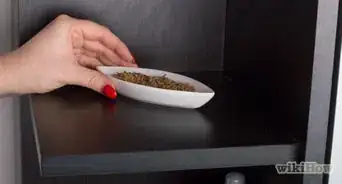
-Step-11.webp)


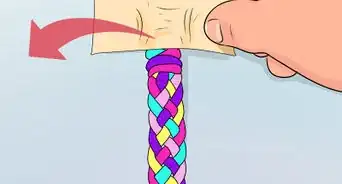
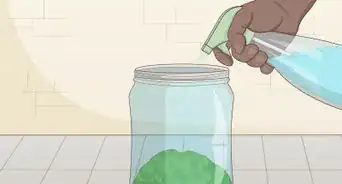










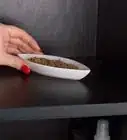
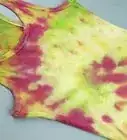

-Step-11.webp)


































